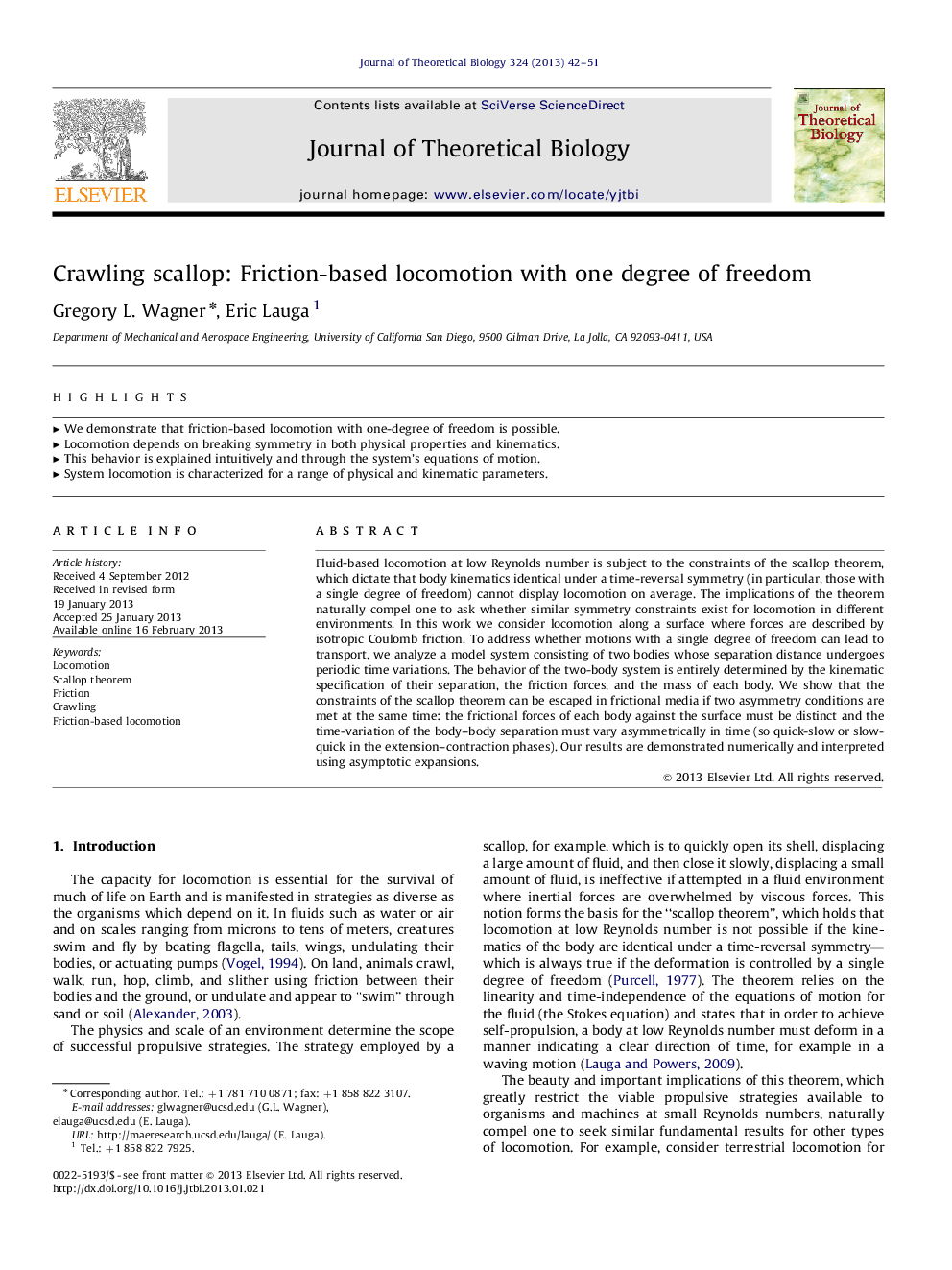| Article ID | Journal | Published Year | Pages | File Type |
|---|---|---|---|---|
| 4496421 | Journal of Theoretical Biology | 2013 | 10 Pages |
Fluid-based locomotion at low Reynolds number is subject to the constraints of the scallop theorem, which dictate that body kinematics identical under a time-reversal symmetry (in particular, those with a single degree of freedom) cannot display locomotion on average. The implications of the theorem naturally compel one to ask whether similar symmetry constraints exist for locomotion in different environments. In this work we consider locomotion along a surface where forces are described by isotropic Coulomb friction. To address whether motions with a single degree of freedom can lead to transport, we analyze a model system consisting of two bodies whose separation distance undergoes periodic time variations. The behavior of the two-body system is entirely determined by the kinematic specification of their separation, the friction forces, and the mass of each body. We show that the constraints of the scallop theorem can be escaped in frictional media if two asymmetry conditions are met at the same time: the frictional forces of each body against the surface must be distinct and the time-variation of the body–body separation must vary asymmetrically in time (so quick-slow or slow-quick in the extension–contraction phases). Our results are demonstrated numerically and interpreted using asymptotic expansions.
► We demonstrate that friction-based locomotion with one-degree of freedom is possible. ► Locomotion depends on breaking symmetry in both physical properties and kinematics. ► This behavior is explained intuitively and through the system's equations of motion. ► System locomotion is characterized for a range of physical and kinematic parameters.
